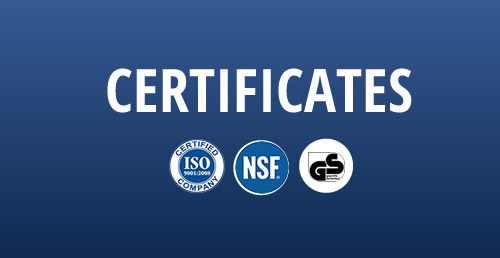headed stud shear connectors
Understanding Headed Stud Shear Connectors Applications and Benefits
Headed stud shear connectors are crucial components in the construction and engineering sectors, primarily used in composite structures. These connectors play an essential role in ensuring the structural integrity of various buildings and infrastructures, connecting concrete slabs to steel beams to create a unified load-bearing system.
A headed stud shear connector typically consists of a cylindrical steel rod with a large head at one end, which is welded to a steel beam's surface. The main purpose of this design is to facilitate effective shear transfer between different materials—most commonly between steel and concrete. This transfer of shear forces allows the two materials to work together as a composite system, enhancing overall performance under loading conditions.
One of the primary applications of headed stud shear connectors is within composite floor systems in high-rise buildings. When concrete is poured over a steel beam that has been fitted with these connectors, the concrete gains significant strength, capable of supporting heavier loads. The headed studs provide a mechanical interlock between the concrete and steel, thus preventing slippage and ensuring that both materials act together as a single cohesive unit.
The advantages of using headed stud shear connectors are multifold. First and foremost, they enhance the structural performance by improving the load-carrying capacity of composite structures. By effectively distributing loads, they can reduce the size of structural elements, leading to more economical and lighter designs. This, in turn, can result in lower construction costs and shorter project timelines.
headed stud shear connectors

Additionally, headed stud connectors enable greater flexibility in design. Engineers can optimize the layout of beams and slabs without compromising structural safety. This adaptability is particularly beneficial in complex architectural projects where unconventional shapes and loads must be considered.
Moreover, installation of headed stud connectors is relatively straightforward. They can be welded directly to the steel beams on-site, minimizing the need for additional fasteners or complex joining methods. This ease of installation not only saves time during the construction phase but also reduces labor costs, making them an attractive choice for contractors and builders.
While there are numerous benefits associated with headed stud shear connectors, it is crucial to consider the quality of materials and workmanship involved in their use. Proper welding techniques must be employed to ensure that connectors achieve the required strength and durability. Regular inspections and adherence to standards are vital to maintaining the integrity of these connections.
In summary, headed stud shear connectors are fundamental elements in the realm of structural engineering and construction, especially in the development of composite structures. Their ability to effectively transfer shear forces, enhance load capacity, and offer design flexibility makes them indispensable in modern building practices. As technology advances and construction techniques evolve, the application of headed stud shear connectors will likely continue to expand, contributing to safer and more efficient structures worldwide.
-
Weatherproof Plastic Expansion Anchors for OutdoorNewsJun.06,2025
-
Sustainability in the Supply Chain: Eco-Friendly TEK Screws ProductionNewsJun.06,2025
-
Load-Bearing Capacity of External Insulation FixingsNewsJun.06,2025
-
Double Head Bolts: Enhancing Efficiency in Industrial MachineryNewsJun.06,2025
-
Corrosion Resistance in Chipboard Screws: Coatings for Wholesale DurabilityNewsJun.06,2025
-
Butterfly Toggle Bolts : Enhancing Structural ResilienceNewsJun.06,2025
